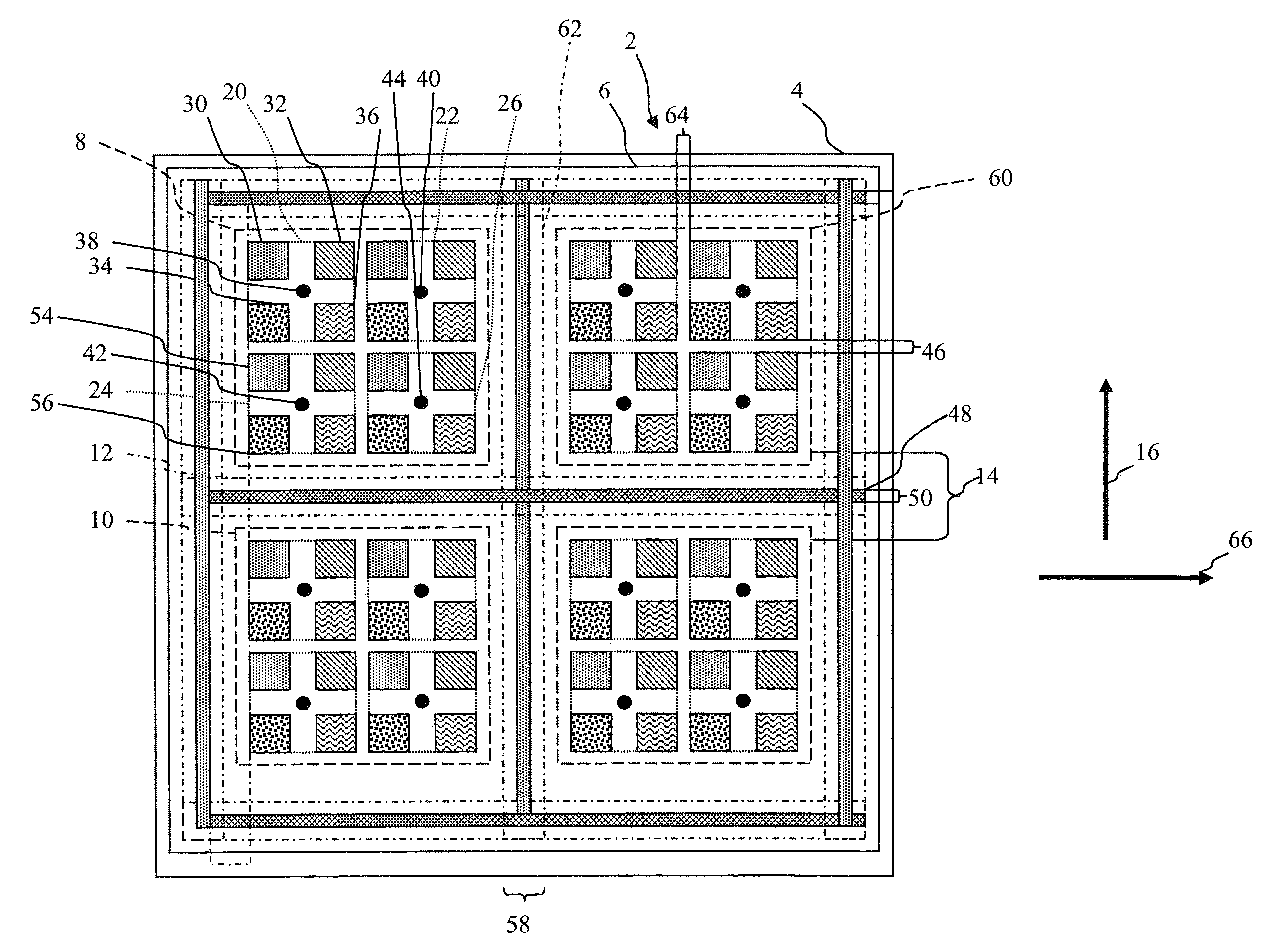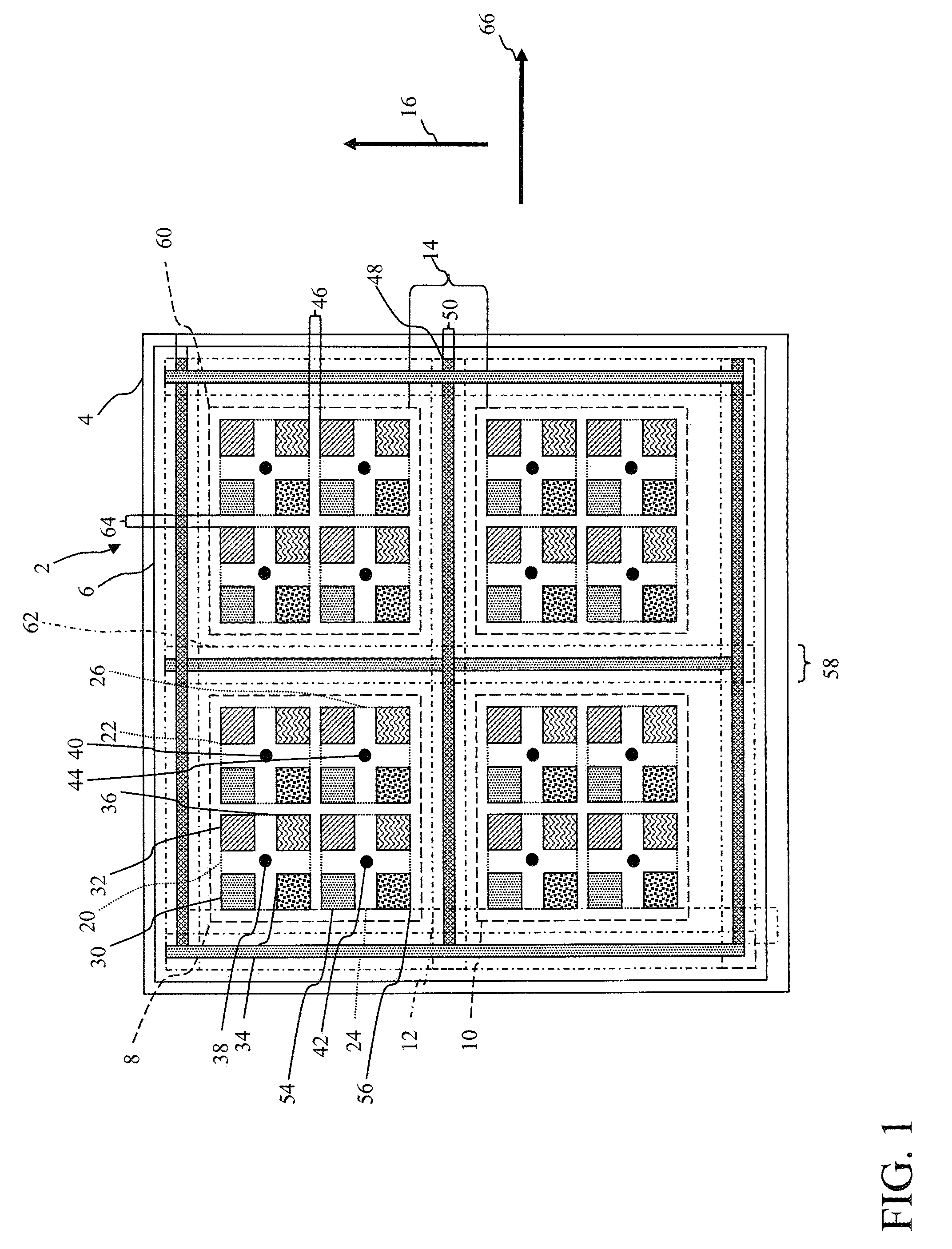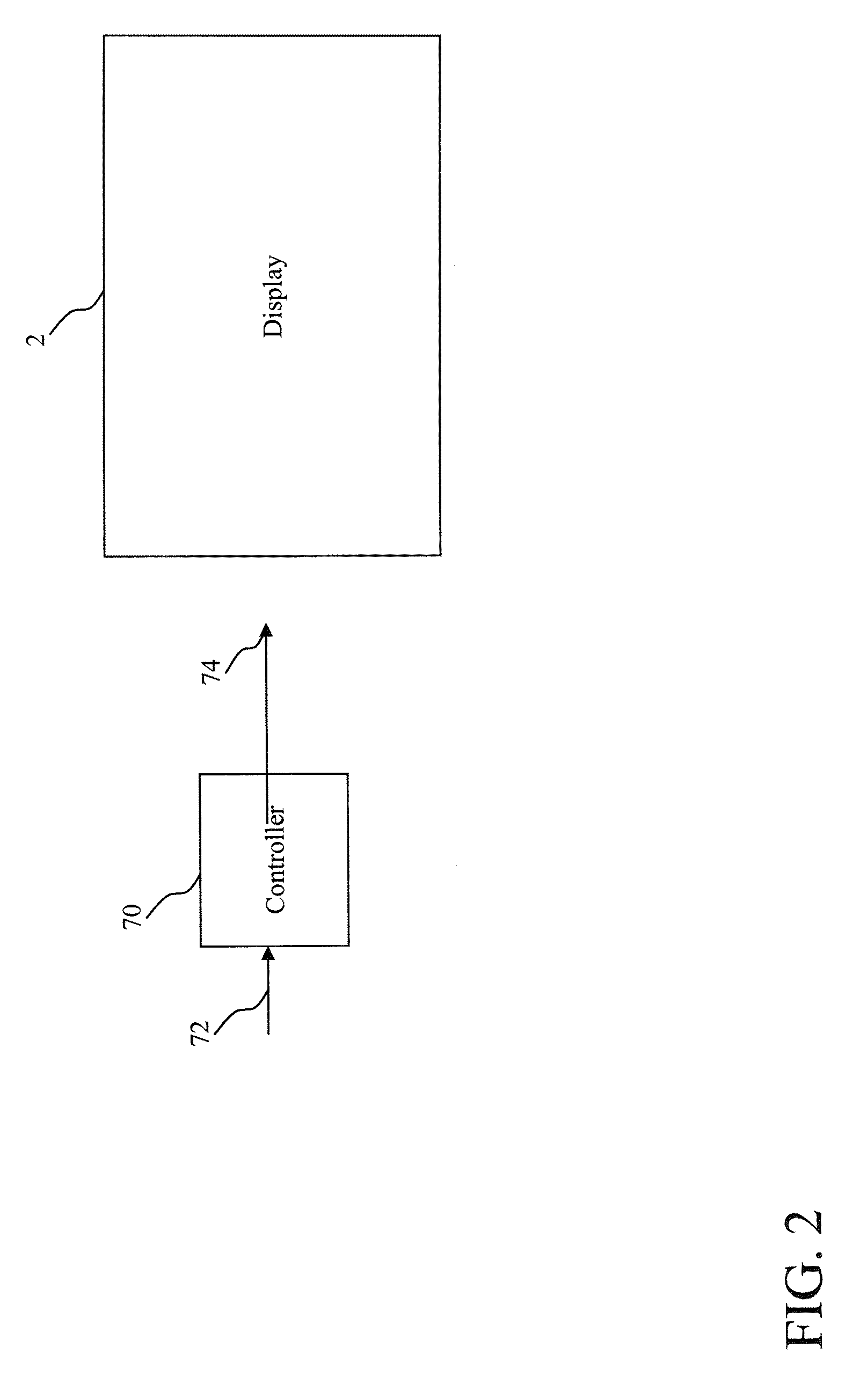Display with pixel arrangement
a technology of pixel groups and displays, applied in the field of displays having pixel groups, can solve the problems of inability to perform critical functions, direct conflict with the display market's demand for high-resolution displays, and impracticality of arrangement for most flat-panel display applications, so as to reduce the current density of emitters, reduce artifacts in displayed images, and increase the light-emitting area of emissive displays
- Summary
- Abstract
- Description
- Claims
- Application Information
AI Technical Summary
Benefits of technology
Problems solved by technology
Method used
Image
Examples
Embodiment Construction
[0026]The present invention provides a display having an improved fill factor, providing reduced current densities in an electro-luminescent (EL) display with reduced image artifacts. An example of a portion of such a display 2 is shown in FIG. 1. As shown, this display 2 includes a substrate 4 and a display area 6 containing pixels, wherein the display area 6 is less than the size or area of the substrate 4. The display area 6 includes a first and a second non-overlapping pixel group 8, 10 and a gutter 12 located between the first and the second non-overlapping pixel group 8, 10. This gutter 12 contains electrical elements for providing power or control signals to multiple rows or columns of pixels as will be further explained. This gutter 12 has a dimension 14 in a first direction, indicated by arrow 16 separating the first and second pixel groups 8, 10. The gutter dimension 14 is measured to include the space between pixels as shown in FIG. 1. In a typical arrangement, an edge of...
PUM
 Login to View More
Login to View More Abstract
Description
Claims
Application Information
 Login to View More
Login to View More - R&D
- Intellectual Property
- Life Sciences
- Materials
- Tech Scout
- Unparalleled Data Quality
- Higher Quality Content
- 60% Fewer Hallucinations
Browse by: Latest US Patents, China's latest patents, Technical Efficacy Thesaurus, Application Domain, Technology Topic, Popular Technical Reports.
© 2025 PatSnap. All rights reserved.Legal|Privacy policy|Modern Slavery Act Transparency Statement|Sitemap|About US| Contact US: help@patsnap.com



